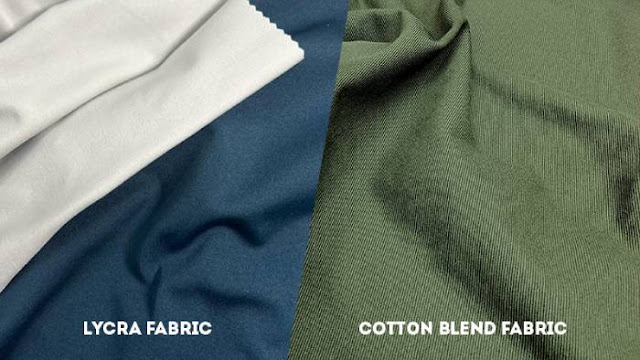Featured
- Get link
- X
- Other Apps
Gender-Neutral and Inclusive Fashion

Redefining Style and Breaking Down Gender Norms
The fashion industry is
experiencing a significant shift towards gender-neutral and inclusive clothing
designs, challenging traditional notions of gender in clothing. This movement
aims to create a more equitable and diverse fashion landscape that accommodates
people of all gender identities and expressions. In this articles, we will
explore the growing momentum of gender-neutral and inclusive fashion,
highlighting its significance, impact on the industry, and the broader
conversation about breaking down traditional gender norms.
The Rise of Gender-Neutral Fashion
1.1. Defying Binary Conventions
Gender-neutral fashion defies the
binary conventions of "men's" and "women's" clothing,
offering styles that transcend traditional gender boundaries. This approach
acknowledges that gender identity is not limited to a binary system and that
clothing should be accessible and comfortable for all.
a. Unisex Clothing: Unisex
clothing has gained popularity, providing individuals with gender-neutral
options that are not tied to any specific gender identity. Brands like Telfar
have made unisex fashion accessible and desirable, creating a sense of
inclusivity and belonging.
b. Gender-Neutral Styles: Many
fashion brands are now incorporating gender-neutral styles into their collections.
These styles often feature relaxed silhouettes, minimalistic designs, and multipurpose
pieces that can be worn by anyone, regardless of their gender identity.
1.2. Representation and Visibility
The fashion industries has long
been criticized for its lack of diversity and underrepresentation.
Gender-neutral fashion seeks to challenge these norms by promoting diversity in
models and marketing campaigns.
a. Non-Binary Models: The
emergence of non-binary models, such as Indya Moore and Rain Dove, has
challenges the industry's traditional standards of beauty and gender
presentation. Their presence in fashion campaigns and on runways highlights the
beauty of diversity.
b. Gender-Inclusive Marketing:
Brands are increasingly adopting gender-inclusive marketing strategies that
feature models and influencers who represent a range of gender identities. This
approach resonates with a broader audience and fosters a sense of belonging.
Breaking Down Gender Norms
2.1. Challenging Stereotypes
Gender-neutral fashion challenges
stereotypes associated with traditional clothing categories. It encourages
people to express themselves authentically without conforming to societal
expectations of how they should dress based on their gender.
a. Empowering Self-Expression:
Gender-neutral fashion empowers individuals to express themselves in ways that
align with their identities, preferences, and styles. It allows them to break
free from the constraints of gender norms and explore their unique fashion
choices.
b. Fluidity and Freedom: By
embracing fluidity in fashion, individuals can experiment with a wide range of
clothing options, from tailored suits to flowing dresses, without feeling
limited by gender expectations.
2.2. Supporting Gender Diversity
Gender-neutral fashion
acknowledges and supports gender diversity by creating a more inclusive space
for people who may not fit within the binary construct of male and female.
a. Transgender and Genderqueer
Communities: Gender-neutral fashion is particularly significant for transgender
and genderqueer individuals who may experience discomfort or dysphoria when
wearing clothing that does not align with their gender identity. It provides
them with options that affirm their identity.
b. Inclusive Design: Designers are
increasingly incorporating features like adjustable waistbands, hidden seams,
and versatile cuts into their clothing to ensure comfort and fit for all body
types and gender identities.
Impact on the Fashion Industry
3.1. Market Growth
The market for gender-neutral and
inclusive fashion is growing fast, driven by changing consumer preferences and
an increased awareness of gender diversity.
a. Retailers and Brands: Major
retailers and brands, such as Zara, H&M, and ASOS, have introduced gender-neutral
collections or eliminated traditional gender labels in their stores. This shift
not only appeals to a wider customer base but also aligns with evolving
societal values.
b. Emerging Designers: Emerging
designers who prioritize gender-neutral and inclusive fashion are gaining
recognition and support. Fashion incubators and organizations are investing in
and promoting these designers, helping to shape the future of the industry.
3.2. Sustainable Practices
Gender-neutral and inclusive
fashion often aligns with sustainability principles by promoting versatile and
long-lasting garments.
a. Reduced Waste: Gender-neutral
clothing is designed to be versatile and timeless, reducing the need for
frequent purchases and minimizing fashion waste.
b. Ethical Production: Many brands
that prioritize inclusivity also emphasize ethical and sustainable production
practices, aligning with the values of conscious consumers.
Challenges and Future Directions
4.1. Limited Size Range
One of the challenges facing gender-neutral
fashion is the limited size range offered by some brands. To be truly
inclusive, the industry needs to ensure that gender-neutral designs are
available in a wide range of sizes, accommodating individuals of all body
types.
4.2. Education and Awareness
There is a need for greater
education and awareness about gender-neutral fashion and the importance of
breaking down traditional gender norms. This includes educating both consumers
and industry professionals about the diverse experiences and identities within
the LGBTQ+ community.
4.3. Cultural Acceptance
In some cultures and regions,
gender-neutral fashion may face resistance or cultural barriers. It is
essential to recognize and respect culturals differences while advocating for
greater acceptance and understanding.
4.4. Policy and Regulation
The fashion industry can benefit
from policies and regulations that promote gender inclusivity and prohibit
discrimination based on gender identity. Governments and organization can play
a role in shaping a more inclusive fashion landscape.
Conclusion
The rise of gender-neutral and
inclusive fashion represents a significant shift in the industry, challenging
traditional gender norms and promoting diversity and self-expression. This
movement not only redefines the way we think about clothing but also
underscores the importance of recognizing and respecting the diverse gender
identities and experiences of individuals. As the fashion industries continues
to evolve, gender-neutral and inclusive fashion will play a pivotal role in
creating a more equitable and accepting world where everyone can express their true
selves through style.
- Get link
- X
- Other Apps
Popular Posts
Difference between Lycra and cotton Lycra
- Get link
- X
- Other Apps
